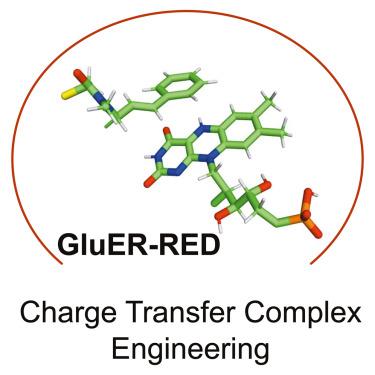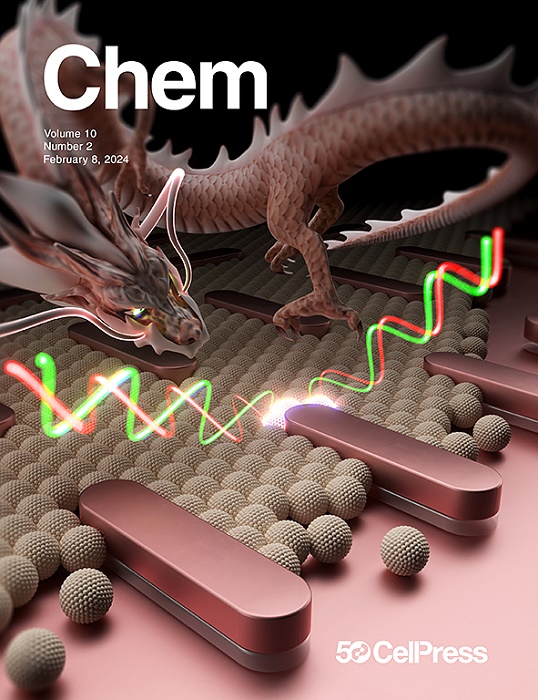Engineering a photoenzyme to use red light
IF 19.1
1区 化学
Q1 CHEMISTRY, MULTIDISCIPLINARY
引用次数: 0
Abstract
Photoenzymatic reactions involving flavin-dependent “ene”-reductases (EREDs) rely on protein-templated charge transfer (CT) complexes between the cofactor and substrate for radical initiation. These complexes typically absorb in the blue region of the electromagnetic spectrum. Here, we engineered an ERED to form CT complexes that absorb red light. Mechanistic studies indicate that red-light activity is due to the growth of a red-absorbing shoulder off the previously identified cyan absorption feature. Molecular dynamics simulations, docking, and excited-state calculations suggest that the cyan feature involves a π→π∗ transition on flavin, whereas the red-light absorption is a π→π∗ transition between flavin and the substrate. Differences in the electronic transition are due to changes in the substrate-binding conformation and allosteric tuning of the electronic structure of the cofactor-substrate complex. Microenvironment tuning of the CT complex for red-light activity is observed with other engineered photoenzymatic reactions, highlighting this effect’s generality.


利用红光改造光酵素
涉及黄素依赖性 "烯 "还原酶(EREDs)的光酶促反应依赖于辅助因子和底物之间由蛋白质引发的电荷转移(CT)复合物来启动自由基。这些复合物通常在电磁波谱的蓝色区域吸收。在这里,我们设计了一种ERED,以形成能吸收红光的CT复合物。机理研究表明,红光活性是由于在先前确定的青色吸收特征上增加了一个红色吸收肩。分子动力学模拟、对接和激发态计算表明,青色特征涉及黄素上的π→π∗转变,而红光吸收则是黄素和底物之间的π→π∗转变。电子转变的差异是由于底物结合构象的变化和辅因子-底物复合物电子结构的异构调整造成的。在其他工程光酶促反应中也观察到了 CT 复合物在红光下活性的微环境调整,这突显了这种效应的普遍性。
本文章由计算机程序翻译,如有差异,请以英文原文为准。
求助全文
约1分钟内获得全文
求助全文
来源期刊

Chem
Environmental Science-Environmental Chemistry
CiteScore
32.40
自引率
1.30%
发文量
281
期刊介绍:
Chem, affiliated with Cell as its sister journal, serves as a platform for groundbreaking research and illustrates how fundamental inquiries in chemistry and its related fields can contribute to addressing future global challenges. It was established in 2016, and is currently edited by Robert Eagling.
 求助内容:
求助内容: 应助结果提醒方式:
应助结果提醒方式:


